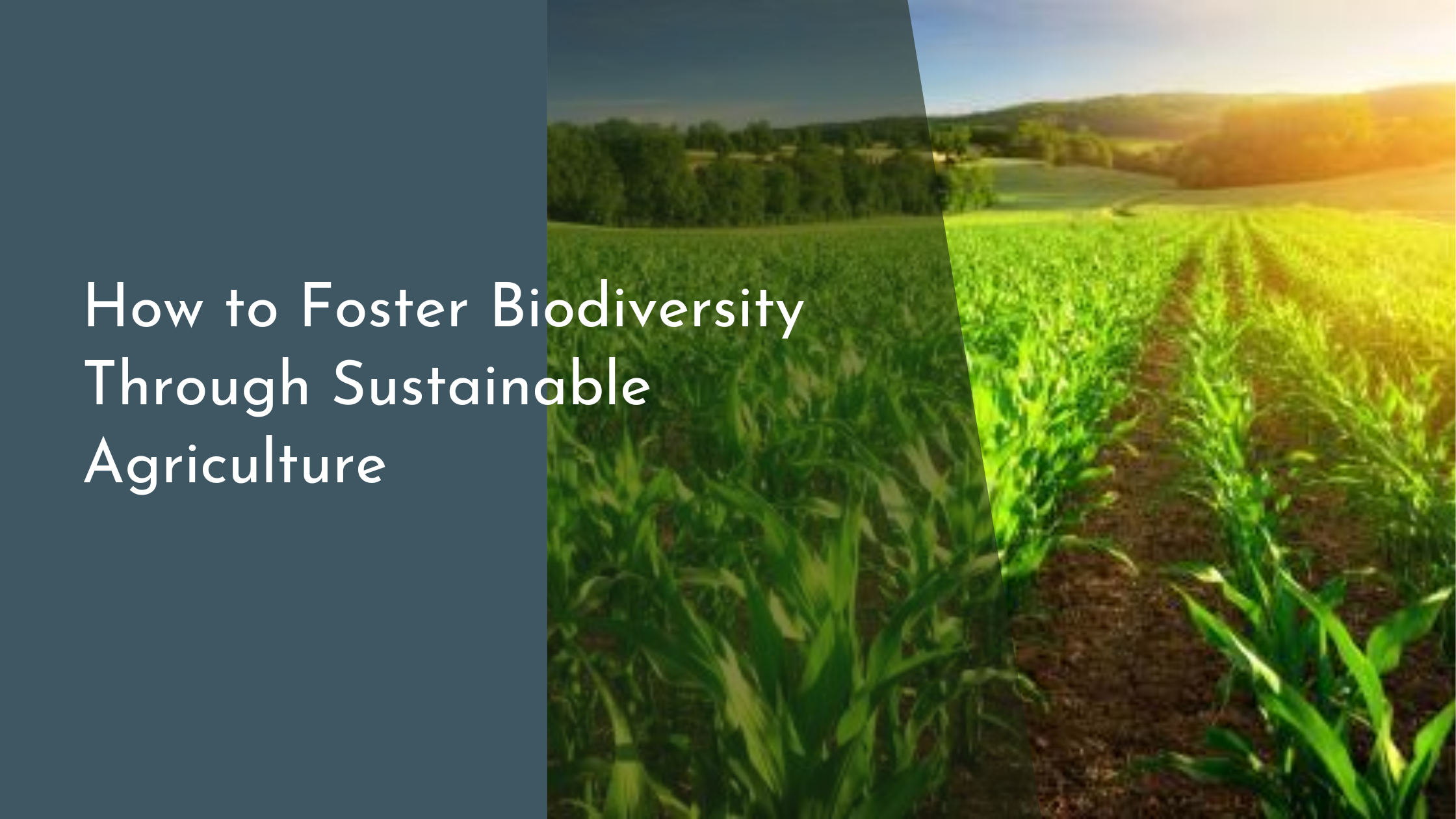How to Foster Biodiversity Through Sustainable Agriculture
In recent years, the importance of biodiversity within agricultural systems has gained significant attention. Biodiversity not only enhances the resilience and productivity of farms but also supports a wide array of ecosystem services that are crucial for both humans and the environment. By adopting sustainable agricultural practices, farmers can create habitats that support diverse species, ultimately leading to healthier ecosystems. In this article, we explore how fostering biodiversity through sustainable agriculture can be achieved, highlighting the practices, technologies, and community efforts that play vital roles in this endeavor.
Understanding Biodiversity in Agriculture
Biodiversity in agriculture refers to the variety and variability of life forms within farming systems, including the diversity of crops, livestock, soil organisms, and the ecosystems they inhabit. This diversity is essential for maintaining ecological balance, improving soil health, and enhancing ecosystem services such as pollination, nutrient cycling, and pest control. When agricultural systems are rich in biodiversity, they are better equipped to withstand environmental stresses and adapt to changing climate conditions.
Unfortunately, modern agricultural practices often focus on maximizing short-term yields through monocultures and heavy reliance on chemical inputs, leading to a decline in biodiversity. These methods can cause soil degradation, water pollution, and a reduction in natural habitats for wildlife. Understanding the intrinsic value of biodiversity in agriculture is the first step towards adopting more sustainable practices that can benefit both the environment and farm productivity in the long run.
Sustainable Practices for Diverse Ecosystems
One of the most effective ways to foster biodiversity in agriculture is through polyculture, or the cultivation of multiple crop species in the same space. This practice mimics natural ecosystems, where a variety of plants coexist, leading to healthier soil and less dependency on external inputs like pesticides and fertilizers. Crop diversity encourages a balanced ecosystem where beneficial insects and microbes thrive, thus enhancing natural pest control and reducing the need for chemical interventions.
Agroforestry is another sustainable practice that integrates trees and shrubs into agricultural landscapes. This approach provides multiple benefits, including carbon sequestration, soil stabilization, and habitat for diverse species. Planting trees alongside crops can also create microclimates that improve growing conditions, increase biodiversity, and even offer additional income streams through the harvest of timber, fruits, or nuts. By incorporating these sustainable practices, farmers can create more resilient and productive ecosystems.
Integrating Technology for Biodiversity Gains
Technology plays a crucial role in supporting biodiversity-friendly agricultural practices. Remote sensing and geographic information systems (GIS) are valuable tools for monitoring land use changes and assessing the health of ecosystems. These technologies can help farmers make informed decisions about crop rotation, soil health management, and the preservation of natural habitats, ultimately promoting biodiversity.
Moreover, precision agriculture technologies such as drones and soil sensors offer innovative ways to optimize resource use and minimize environmental impact. By applying fertilizers and pesticides more efficiently, farmers can reduce their ecological footprint while maintaining productive yields. These technologies support sustainable farming practices that contribute to biodiversity conservation by ensuring that agricultural inputs are used judiciously and with minimal adverse effects on surrounding ecosystems.
Community Involvement in Sustainable Farming
Community involvement is essential for promoting sustainable agricultural practices that foster biodiversity. Local communities can play a vital role in sharing knowledge, resources, and best practices that enhance biodiversity on farms. Community-supported agriculture (CSA) programs, for instance, encourage consumers to connect directly with farmers, fostering a shared commitment to sustainable practices and biodiversity conservation.
Education and outreach are key components in engaging communities in sustainable farming efforts. Workshops, field days, and collaborative projects can raise awareness about the importance of biodiversity in agriculture and equip farmers with the skills needed to implement sustainable practices. By building a network of informed and engaged stakeholders, communities can work collectively towards creating agricultural systems that are both productive and ecologically sound.
Fostering biodiversity through sustainable agriculture is not only beneficial for the environment but also for the long-term viability of farming operations. By understanding the role of biodiversity, adopting sustainable practices, integrating technology, and involving communities, farmers can create agricultural systems that support diverse species and resilient ecosystems. As we move towards a more sustainable future, embracing these strategies can help ensure that our agricultural landscapes are rich in biodiversity, providing essential ecosystem services and enhancing the quality of life for all.

